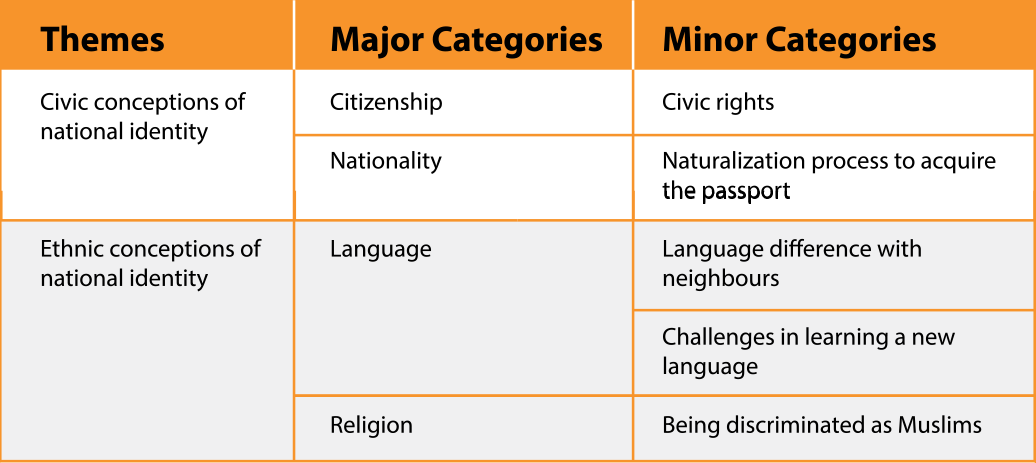Coding: How it is done?
You may ask yourself these questions as you go through your data:
- What is this about? What does it represent?
- Is this an example or case of something?
- What do I see is going on here?
- What is happening?
- What kind of events are at issue here?
- What is trying to be conveyed?
The following guide shows a basic form of coding:
- Identify the key words/phrases in the content
- Use a simple word/ phrase to summarize what you have read (creating codes)
- Look for possible patterns in the context, e.g. similarity, differences, frequency, correspondence, causation
- Try to identify the connections between the codes (by identifying categories and themes). For example, when analysing an interview about an immigrant’s national identity, the interviewee may mention different things about his/her experience, you can identify different codes in it, and turn them into categories like ethnicity, language, religion, national history, citizenship, nationality etc. You may also try to associate these categories under the themes of civic or ethnic conception of national identity.
 An example of how to present your analysis
An example of how to present your analysis

- The most important area you need to be mindful of is the identification of the concepts and themes, as well as patterns and linkages between concepts and themes, and the formation of a rich descriptive narrative.
- Think about “what seem to be missing, and why?”. Think about what is present and what is missing.
- Whether the most serious problems were addressed or ignored: did the problems you identified affect all the people or just some of them?
- Weighing and combining pull different events into a single descriptive narrative put codes together to describe and explain what happened (or the concept).
- If interviewees do not agree with one another… then you need to weigh the evidence from different interviews to check, and make your own interpretation of what happened and what it means.
 Know More
Know More
| Saldaña, J. (2016). The coding manual for qualitative researchers (3rd ed.). London: SAGE publishing Ltd. |
|---|
Connecting the dots
The codes, categories and themes you discover need to be connected in order to generate a broader implication of your findings and analysis. While attempting to draw the linkages between the codes, categories and themes, you should always have these questions in mind:
- Why something happened?
- What concepts are important?
- How certain themes might be related? (Rubin and Rubin, 2004)
- Are they examples of the same larger process or concept?
- Are they opposites or in tension?
- Does one cause or influence one or more of the others?
- Do several influence each other?
- Are some of them causes or consequences of some third theme or concept
You could look for those places in your transcripts where the coding shows that two or more themes are discussed together.
It is also helpful to make good use of the published researches to act as the starting base to examine your collected data. This is not merely a test of theories that you have read, but also relating the themes and concepts found in the literatures in a different way, or put them in a different context and re-interpret what researchers have already suggested.
What else can be done?
- How does your research findings “speak” to the existing researches and theories? Are there something new that you can provide?
- Instead of giving general suggestions, think about the implications of your work
- Show your work (written paragraphs) to your classmates and friends for opinions and comments
